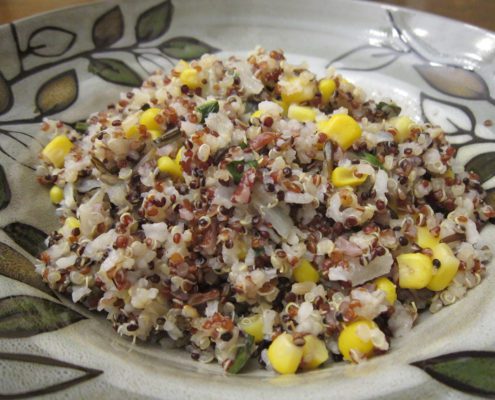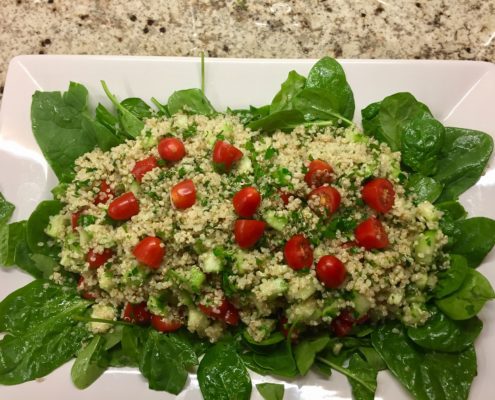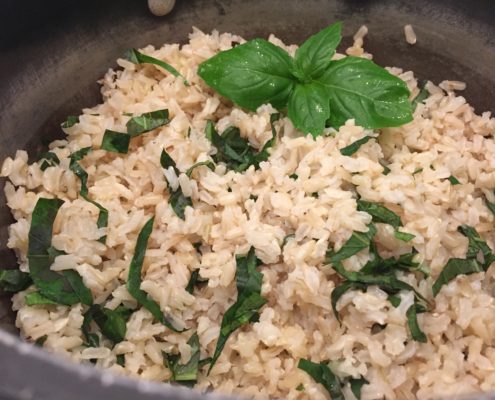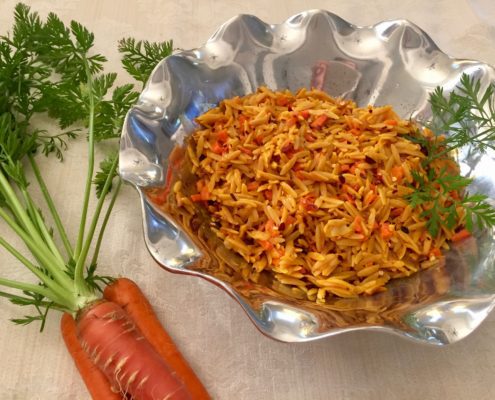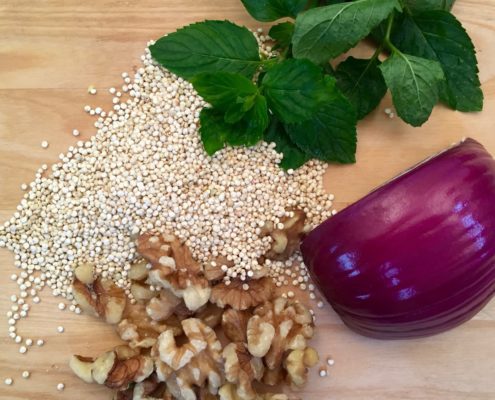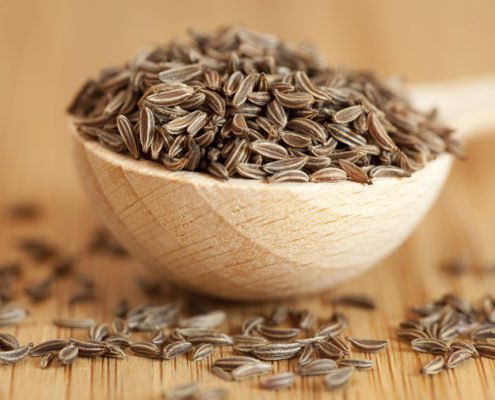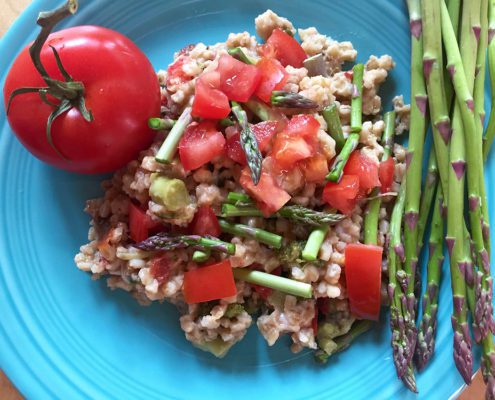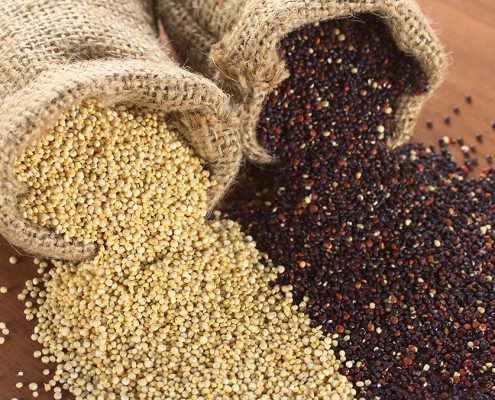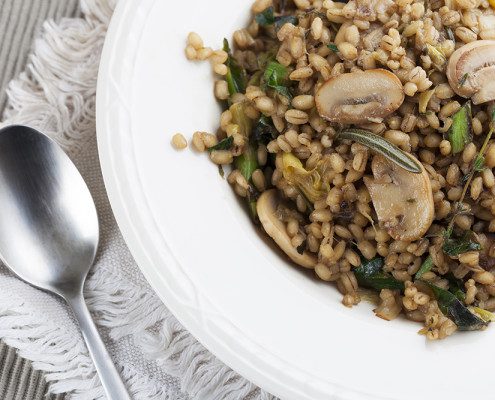[su_expanding_quote_book alignment=”right” source_author=”Margaret Wittenberg” source_title=”The Essential Good Food Guide” affiliate_link=”http://amzn.to/tocome” full_quote=”Whole grains have extraordinary benefits and can play a foundational role in a healthy lifestyle. The fiber, vitamins, minerals and health-promoting phytonutrients (plant chemicals) have been shown to help reduce cholesterol levels, improve intestinal health, stabilize blood sugar levels and decrease the incidence of heart disease, diabetes, and some forms of cancer.” short_quote=”Whole grains have extraordinary benefits and can play a foundational role in a healthy lifestyle”]
Grains are one of the oldest foods, going back thousands of years: rice in Asia, millet in Africa, quinoa in South America. We’re fortunate that grains from around the world are increasingly available to us. And the increased access to ethnic cuisines greatly expands the diversity of flavors and ways to prepare one of nature’s nourishing bounties.
As I’ve learned about the exceptional nutritional value of whole grains—and the long-term impact on health—the variety of whole grains in my kitchen expanded and moved into meals often on a daily basis. I used to consider them a boring side dish; now they can even take center stage on my plate. They’re incredibly versatile—as the base for roasted or steamed vegetables, curry or tagine (a rich stew of meat, chicken, or fish, and most often includes vegetables or fruit), as a pilaf or side dish to fish and poultry, patties and casseroles, in soups and stuffing. Grains from the night before can easily go into soup or salad for lunch the next day.
And they make a mighty breakfast. Hot oatmeal, rice cereal and buckwheat groats in winter…granola, muesli, overnight oats during warmer seasons are generally our go-to breakfasts.
Whole grains may seem too expensive, but buying in bulk makes them more affordable. And reassign your shopping dollars from processed breakfast cereals and packaged/flavored grains to whole grains to fit them into your budget.
[su_expanding_quote_book alignment=”full” source_author=”Margaret Wittenberg” source_title=”The Essential Good Food Guide” affiliate_link=”http://amazon.to/something” full_quote=”What is a whole grain? A whole grain contains all of the components that are naturally present in the seed of a cereal grass plant, and thus contains all its nutrients. Because grains are designed to support the growth of the seed when it sprouts, they’re a rich source of nutrition for us too.
There are three major structural components of a whole grain:
- Bran: the outer covering of the grain contains the highest concentration of fiber and is also rich in B vitamins, trace minerals and potent antioxidants, including lignans. Its role is to protect the contents of the seed prior to germination.
- Germ: the life force of the grain, the part of the seed that sprouts to form a new plant. It contains vitamin E, trace minerals, B vitamins, minerals and protein.
- Endosperm: contains starchy carbohydrates, protein and small amounts of vitamins and minerals stored as fuel to nourish the sprouted grain during its early growth.
” short_quote=”What is a whole grain? A whole grain contains all of the components that are naturally present in the seed of a cereal grass plant”]

